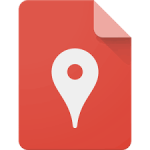How to Use Google Forms, Sheets, & Maps to Survey Your Community (For Free)
Every church needs to know the community around them. Many churches today knew their community at one time, but things change. When it comes to communities here in the US, that transition has happened quickly and everywhere.
Many (I would guess most) neighborhoods look different today than they did 10-15 years ago. In many places immigration has brought the nations into our neighborhoods. Today your new neighbor is as likely to come from Dehli as from Delaware. Nowadays, we have Hindu neighbors, Buddhist neighbors, Muslim neighbors, and all kinds of things in between.
And for those few neighborhoods that are not seeing international influx, they are nevertheless in transition. Gentrification is redrawing boundary lines for neighborhoods and there is a likely chance your community has different culture and values than it did before. If you ever plan to do effective ministry where you sit, then you need to know.
When I speak and teach on these transitions, it is most often met with wholehearted agreement and confused looks concerning where to start.
Every Church Can Research Their Neighborhood
At this point, it is too common to number. Virtually everywhere I go to work with churches or conventions, I meet people who feel they lack the expertise to do people group discovery in their community. This is simply not true. We do not need cultural expertise to start the mission; we simply need to be learners.
We have done ourselves as disservice in Evangelical denominations by convincing ourselves that ministry requires “ministry specialists.” This is not true for evangelism. It is not true for discipleship. It is not true for missions. And it is not true for people group discovery around your church. While special research from agencies or institutions can be helpful from time to time, what a church really needs to do is go out into their own community and collect their own information. And honestly, it is not hard to do.
When your local church gathers its own research on your community, it is your church members who have developed the relationships necessary to get that info. That is huge when it comes to missions. Instead of being handed a spreadsheet full of numbers that make little more than sermon talking points, your church members have walked into businesses and met real neighbors. They know real names and real locations.
Furthermore, compiling this information to get a clearer picture of your community is not hard either. In fact, there are a number of easy, free tools nowadays that basically compile that information for you. Here is one simple method.
One Simple Method for Surveying Your Community
When local churches come to wanting to map out their neighborhood, I do not send them to some fancy mapping software and census data. I send them to Google Maps.
By this point, most people have used Google maps, and many have used their productivity suite for documents, spreadsheets, and online forms. These tools are specifically designed to be easy on new users, and they are basically ubiquitous at this point. And of course, they are free to anyone with a Gmail account. It is entirely possible to collect a great deal of helpful information on your community and visualize it using nothing but Google.
Google Forms
Google’s online form creator is the starting point for creating a community survey system. It is easy to set up a form with a number of questions that provide insight. Just remember, less is more. The fewer questions you ask, the more likely your church members will get all the information.
When attempting to discover people groups, it is important to ask three specific questions. First, you will need to find out their country of origin. Second, you will want to ask what language they speak in the home. Finally, try and find out their religion. These three pieces of information together will usually identify an ethnolinguistic people group.
In addition, you will need to take down basic information on the establishment you visit. Have spots on the form for the name and address of the establishment. It is also good to note the type of establishment, whether it is a restaurant, hair braiding salon, international market, etc.
After the form is complete, you will have a link to distribute to church members. Google Forms are responsive, and so they will pull up nice and easy on a smartphone. In fact, with most smart phones, you can pin the form directly to the home screen of the phone like it is an app. That way, your church members are one tap away from filling out information on a new place they visit.
Of course, it should go without saying that walking into any establishment with your phone in your hand filling out the form as you talk would be rude. People are much more likely to be curious (and not in a good way) if they feel like they are being monitored. That is not the purpose or spirit of gathering this kind of information, so have church members hold off on the form until after they leave.
Finally, after creating the form and using it, there is a responses tab that provides aggregated information on all of your submissions. How many Indian restaurants have you found? Well, this tab can show you. It will show you the percentages of nationalities or pie chart of languages depending on how you build the form. The more information that is entered, the clearer the picture becomes. However, the good stuff is still to come.
Google Sheets
This is where this whole process gets cool. Every Google form automatically builds a Google spreadsheet. It is built right into the Google Drive account where the form was created.
Every time someone fills out the form, a new line of information is automatically entered into the same spreadsheet. This becomes your community database without any effort. As your members use the form, the amount of information you gather on the community grows and this spreadsheet becomes more valuable.
You can use the responses tab mentioned above to see certain visualizations of the information. It will automatically create pie charts and other relevant information from the data you collect. However, to really visualize this process, you need the spreadsheet.
My Maps (Google Maps)
Google Maps has a section called My Maps and here you can build your own, editable maps. It is possible to place points one at a time in a map and fill in information on them, or you can bulk import information directly from a Google spreadsheet. See where this is going?
As your Google sheet gets big enough, you can go to My Maps and import that Google sheet straight from the Drive account and it will geocode all of your data. Geocoding is the fancy way of saying that it will place all of the points of interest that you gathered on one map together. Of course, you must have the addresses built in as a question on that form, or it will not have the information necessary to map your community.
After importing the sheet, it will ask you which column of data to use in order to plot the points, and it will ask you which column of data to use for naming the points. This is why you need to know the name and address of every establishment. Once the points are plotted, it is possible to change the styles on them and color code them by either type of establishment or even nationality, language, or religion.
The result is a map full of places that are connected to different nationalities or people groups. This allows you to see who is now in your neighborhood, and it also shows you where they are. Add this knowledge to all the personal relationship development that occurred by having your own members find out the information, and you have some valuable missions research.
I encourage you to play with these features in Google Drive. After all, they are free, and pretty easy to use. Shoot me an email or a comment if you have any questions, and I would be happy to help your church start thinking through ways they can discover and engage the community around them.














